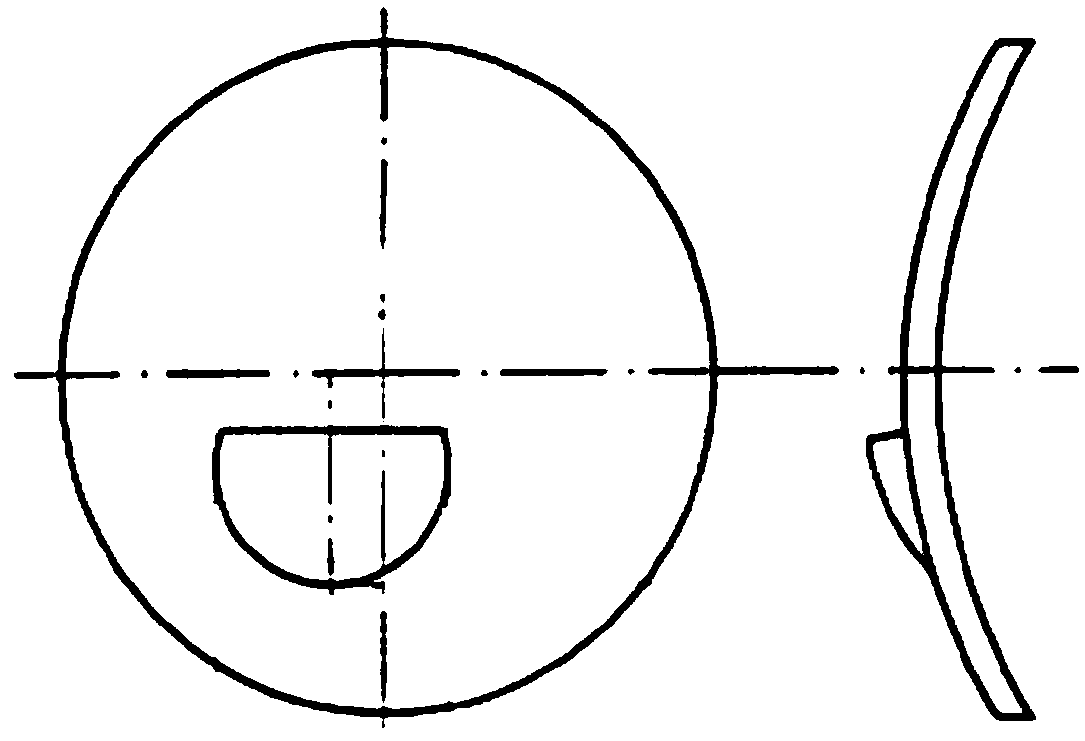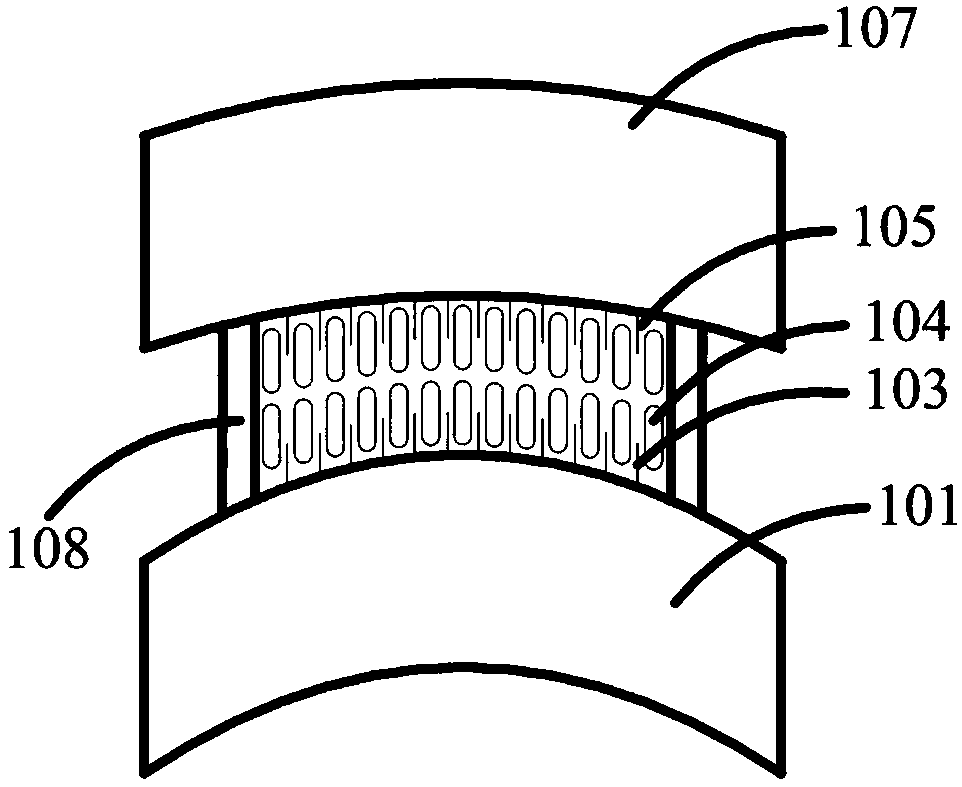Variable-focal-length eyeglasses based on liquid crystal lenses
A liquid crystal lens and glasses technology, which is applied in the field of zoom glasses, can solve problems such as unsightly appearance, distance between bifocal lenses, and prism jumping, etc., and achieve the effects of balanced refractive index, improved uniformity, and improved vision
- Summary
- Abstract
- Description
- Claims
- Application Information
AI Technical Summary
Problems solved by technology
Method used
Image
Examples
example 1
[0048] Example 1, such as Figure 6 As shown, the user needs to be equipped with myopia glasses with a normal diopter of 200 degrees and a second diopter of 150 degrees, that is, the first diopter is -2D, the second diopter is -1.5D, and the double diopter difference is -0.5D. In the figure, from bottom to top are the first lens substrate 101 , the liquid crystal layer 104 , and the second lens substrate 107 . Wherein, the lower surface of the first lens substrate 101 also uses polishing to fine-tune the lens diopter, and the radius of curvature of the upper and lower interfaces of the second lens substrate 107 is the same, and the diopter is 0.
[0049] The optical structure of the liquid crystal layer 104 is in the form of a concave-convex mirror, α=-1, and β=1; after the liquid crystal material is selected, the birefringence of the liquid crystal and the difference between the birefringence of the liquid crystal are determined, assuming that the first refractive index of ...
example 2
[0054] Example 2, such as Figure 7 As shown, the user needs to be equipped with reading glasses with a normal diopter of 100 degrees and a second diopter of 50 degrees, that is, the first diopter is +1D, the second diopter is +0.5D, and the double diopter difference is 0.5D. In the figure, from bottom to top are the first lens substrate 101 , the liquid crystal layer 104 , and the second lens substrate 107 . Wherein, the lower surface of the first lens substrate 101 also uses polishing to fine-tune the lens diopter, and the radius of curvature of the upper and lower interfaces of the second lens substrate 107 is the same, and the diopter is 0.
[0055] The optical structure of liquid crystal layer 104 selects the double-convex mirror form for use, α=1, β=1; Adopt because after the liquid crystal material is selected, the birefringence of liquid crystal and the difference of birefringence have just determined, suppose, the first refraction of liquid crystal The index is 1.8...
PUM
| Property | Measurement | Unit |
|---|---|---|
| Diopter | aaaaa | aaaaa |
Abstract
Description
Claims
Application Information
 Login to View More
Login to View More - R&D
- Intellectual Property
- Life Sciences
- Materials
- Tech Scout
- Unparalleled Data Quality
- Higher Quality Content
- 60% Fewer Hallucinations
Browse by: Latest US Patents, China's latest patents, Technical Efficacy Thesaurus, Application Domain, Technology Topic, Popular Technical Reports.
© 2025 PatSnap. All rights reserved.Legal|Privacy policy|Modern Slavery Act Transparency Statement|Sitemap|About US| Contact US: help@patsnap.com



